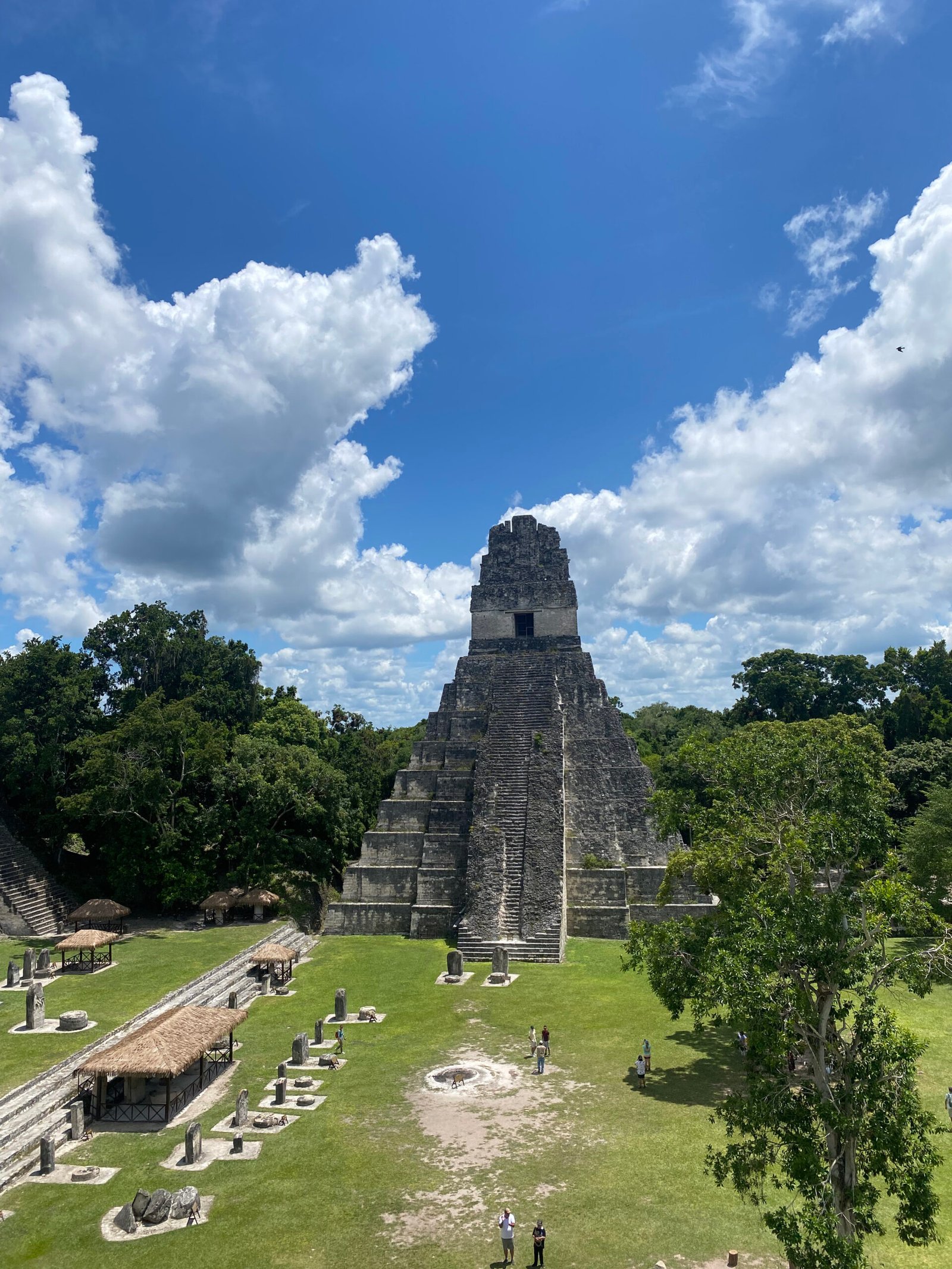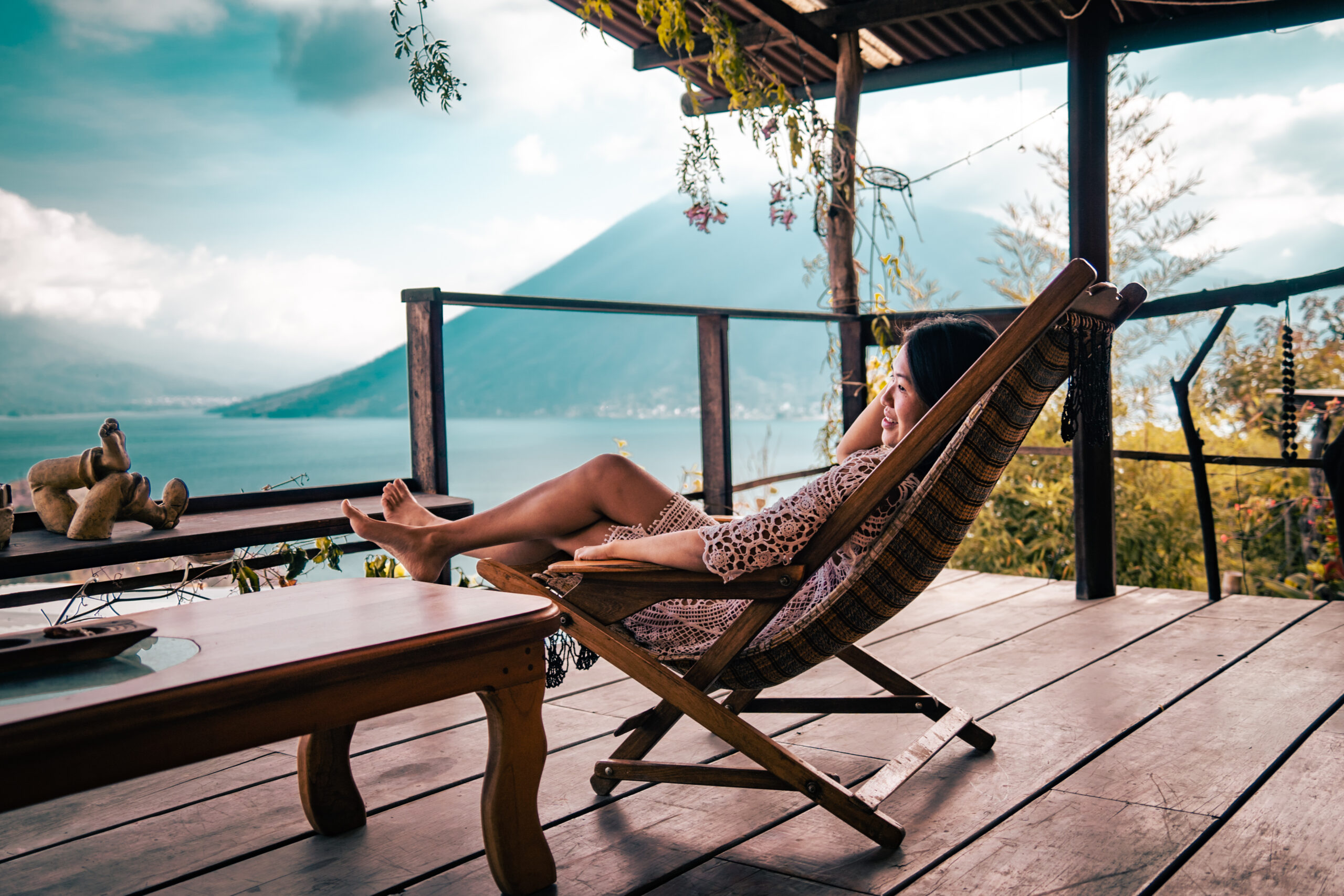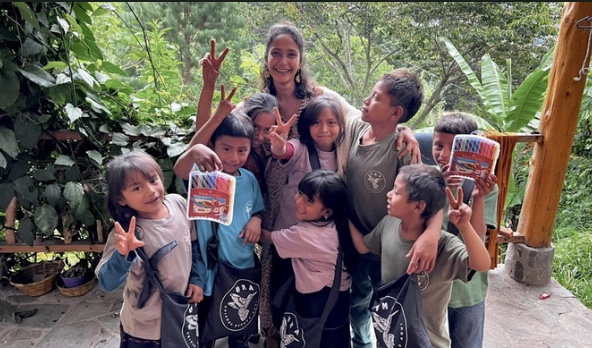Exploring Tikal’s Ancient Ruins – The Ultimate Guide to Tikal, Guatemala
Insider Tips from Eagle’s Nest Atitlan
As locals in Guatemala’s Lake Atitlan region, Eagle’s Nest Atitlan is excited to share our firsthand knowledge of Tikal’s historic beauties.
This guide will help you make the most of your visit to this ancient Mayan metropolis, from spectacular vistas to hidden gems. Immerse yourself in Tikal’s ancient treasures as we lead you through the enthralling ruins and provide our professional recommendations.

Uncovering Ancient Secrets
Explore the awe-inspiring ruins of Tikal on a fascinating journey into the heart of Mayan culture. This UNESCO World Heritage Site provides a once-in-a-lifetime opportunity to visit towering pyramids and elaborately carved temples. Our professional guide will reveal the intriguing history and significance of each structure, allowing you to learn more about them.
What is the significance of the Tikal ruins?
For thousands of years, the Maya civilisation, one of the most complex ancient civilizations, lived in Mesoamerica. Their society made remarkable advances in art, architecture, mathematics, astronomy, and written language. Tikal, in modern-day Guatemala, was one of the Maya civilization’s most important cities.
Tikal’s history begins in the Preclassic period, circa 800 BCE, with the establishment of a tiny ceremonial hamlet. Tikal evolved into a powerful city-state throughout time, conveniently located in a lush rainforest with many natural resources. The Maya believed in building sacred spaces and integrating spirituality into their daily lives, which resulted in Tikal’s growth as a magnificent ceremonial center.
Fascinating Facts about Tikal
The Significance of Tikal’s Ancient ruins
Did you know that Tikal is located in the center of the five major Mayan sights?
The Mayan lands spread far across borders of our modern-day countries. In fact, there are five major Mayan sights, forming a cross. Tikal is located exactly in the middle of this cross, which is why it is often referred to as the heart of the Mayan land.
Tikal’s strategic location allowed it to establish strong connections with other significant Mayan sites in different countries. The Maya developed a complex network of trade routes, ceremonial pathways, and communication systems that linked Tikal to places such as Copan in present-day Honduras, Palenque in Mexico, and Caracol in Belize.
Traces of Mayan Astrology at Tikal
Tikal’s alignment with the celestial bodies showcases the Maya’s advanced understanding of astronomy and astrology. Structures like Temple I are aligned precisely to capture the equinoxes and solstices, symbolizing important celestial events within the Maya calendar system.
Mayan temples typically faced east, towards the rising sun. This eastward orientation held deep symbolic and religious significance for the Mayan civilization. The Maya considered the east as the direction of rebirth and renewal, representing new beginnings and the dawning of a new day. By positioning their temples to face the east, they sought to align themselves with the cyclical nature of the sun, its daily journey across the sky, and the continuous cycle of life and death

Why Tikal Was Built
Tikal was built for a variety of cultural, political, and religious reasons. The Maya considered Tikal to be a site where they could revere their deities, execute elaborate rites, and interact with the spiritual realm. The governing class used enormous constructions to demonstrate their authority and rank within Maya culture. Tikal functioned as a political crossroads, creating alliances, trade, and diplomatic contacts with adjacent city-states.
How Did Life in Tikal look like?
Tikal life revolved around the Great Plaza, which was located in the heart of the city. Monumental pyramids, temples, palaces, and ball courts ringed this immense open expanse. The ruling class lived in lavish palaces with complex stone carvings and exquisite interior designs.
Agriculture, particularly maize production, was the lifeblood of Tikal’s economy. To maximize food yields, the Maya used complex agricultural techniques such as terracing and irrigation. Trade networks enabled the trade of commodities such as precious minerals, pottery, obsidian, and textiles.
Religion was an important aspect of the Maya’s daily existence. Tikal had a plethora of temples dedicated to various deities, with pyramids functioning as gates to the holy realm. To satisfy the gods and assure the city’s prosperity, elaborate rituals such as bloodletting ceremonies and human sacrifices were undertaken. Tikal’s kings were thought to be divinely appointed, bridging the mortal and divinity realms.
Tikal reached its pinnacle during the Classic period (250-950 CE), with a population of about 90,000 people. However, Tikal, like many other Maya cities, began to decline about the 10th century CE, most likely as a result of political upheaval, environmental changes, and the slow demise of the Maya civilisation.
Tikal is now a captivating tribute to the Maya people’s inventiveness and tenacity. Its magnificent ruins continue to inspire awe, providing insights into this ancient civilization’s complex cultural, religious, and social fabric.
What can I expect to see in Tikal?
Tikal’s expansive archaeological site, which spans over 222 square miles, can be difficult to navigate. But don’t worry, our insider knowledge will help you make the most of your vacation. We’ll take you to important overlooks and lesser-known paths, making sure you don’t miss any of the park’s highlights. Tikal’s real magnificence may be seen from the grandiose Temple of the Jaguar to the Great Plaza and the mystical Lost World complex.
Spectacular Sunrise and Sunset
Experience the spectacular sunrise or sunset views to witness Tikal’s enchantment at its best. Our guide will show you the best sites in the park to catch the stunning moment when the sun sends its golden rays over the ancient ruins.
Wildlife in the Tikal rainforest
In addition to its architectural wonders, Tikal is a sanctuary for nature lovers. A diverse assortment of species thrives within the park, including colorful toucans, howler monkeys, and even elusive jaguars. Be prepared for tarantulas and other kinds of spiders!
How much time does it take to explore Tikal?
The length of your visit to Tikal will depend on various things, including your level of interest, physical fitness, and preferred exploration speed. Most guided tours will take about 4 hours. It is recommended to visit in the early mornings, because it gets hot during the day. Common times for guided tours start at 3:00am, 4:30am, 5:30am, 6:30am or 8:00am.
Can I climb the Tikal Pyramids?
Yes, you can climb some of Tikal’s pyramids, affording a wonderful opportunity to see the site from a higher perspective. It is crucial to remember, however, that not all pyramids are allowed for climbing due to preservation efforts and safety concerns.

What are the nearby attractions to Tikal?
While Tikal takes center stage, our guide would be negligent if it did not identify other local places worth visiting. Off the main road, you’ll find hidden jewels like Yaxha, El Mirador, and Uaxactun. These lesser-known Mayan locations allow you to immerse yourself further in the rich Mayan heritage and provide rare glimpses into ancient rites and practices.
Where to stay when visiting Tikal
The most common place to stay for visitors of the Tikal ruins is the cute town of Flores – the island of Flores (Isla de Flores) to be precise. This charming town is located on an island on the beautiful lake Peten Itza and is full of restaurants, cafes and shops. You can indulge in other activities on the island, such as kayaking, SUP or swimming in the lake.
If you like it more remotely and less touristy, stay in the lake village of El Remate. It is located on the way from Flores to Tikal, which means you have to wake up later when visiting the ruins. The little town has a decent choice of restaurants, hotels and travel agencies which can organize your trip to the ruins for you.
What else to do in Guatemala?
While Tikal’s ancient wonders captivate the hearts of travelers, Guatemala offers a myriad of enchanting experiences beyond this magnificent Mayan site. In our latest blog article, we delve into the vibrant tapestry of Guatemala, unveiling its hidden gems and must-see destinations. Join us as we discover the cultural riches, natural beauty, and captivating adventures that await beyond Tikal’s mysteries here: What are the Must-Visit Attractions in Guatemala? Unveiling the 8 Most Breathtaking Adventures
After your memorable Tikal excursion, we invite you to extend your stay at Eagle’s Nest Atitlán, our exquisite lakeside resort on the shores of breathtaking Lake Atitlan. Relax in our luxurious accommodations, which are surrounded by spectacular natural beauty. Our daily yoga classes, sauna and three nourishing meals a day leave you with plenty of time to relax after your explorations. Find our accommodation options here!

Make sure to check our transformative events and workshops for an uplifting and inspiring journey through Guatemala.




